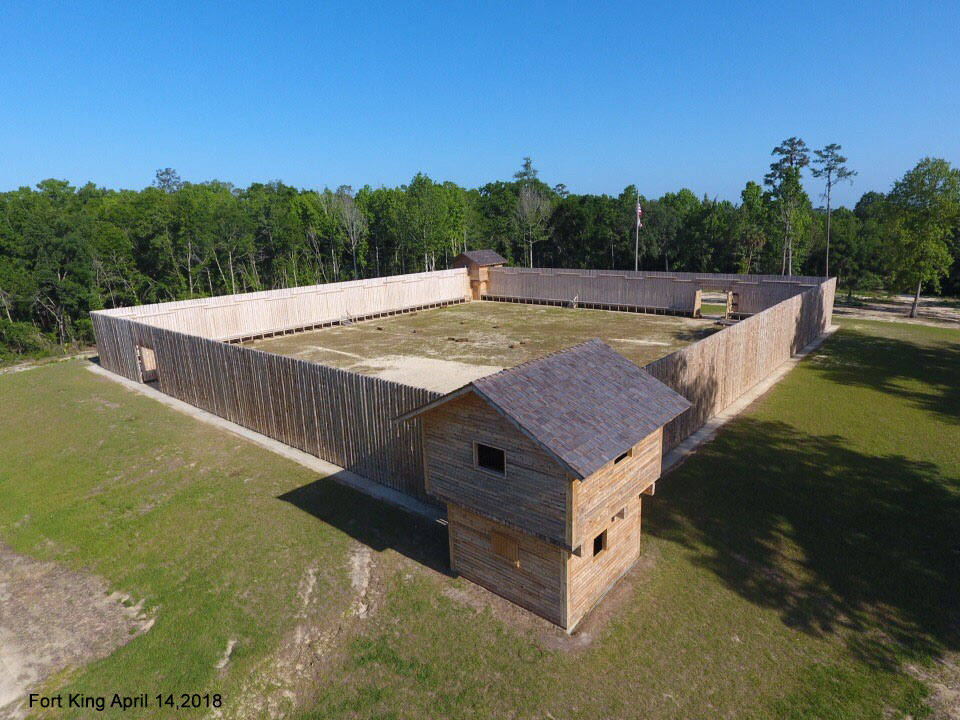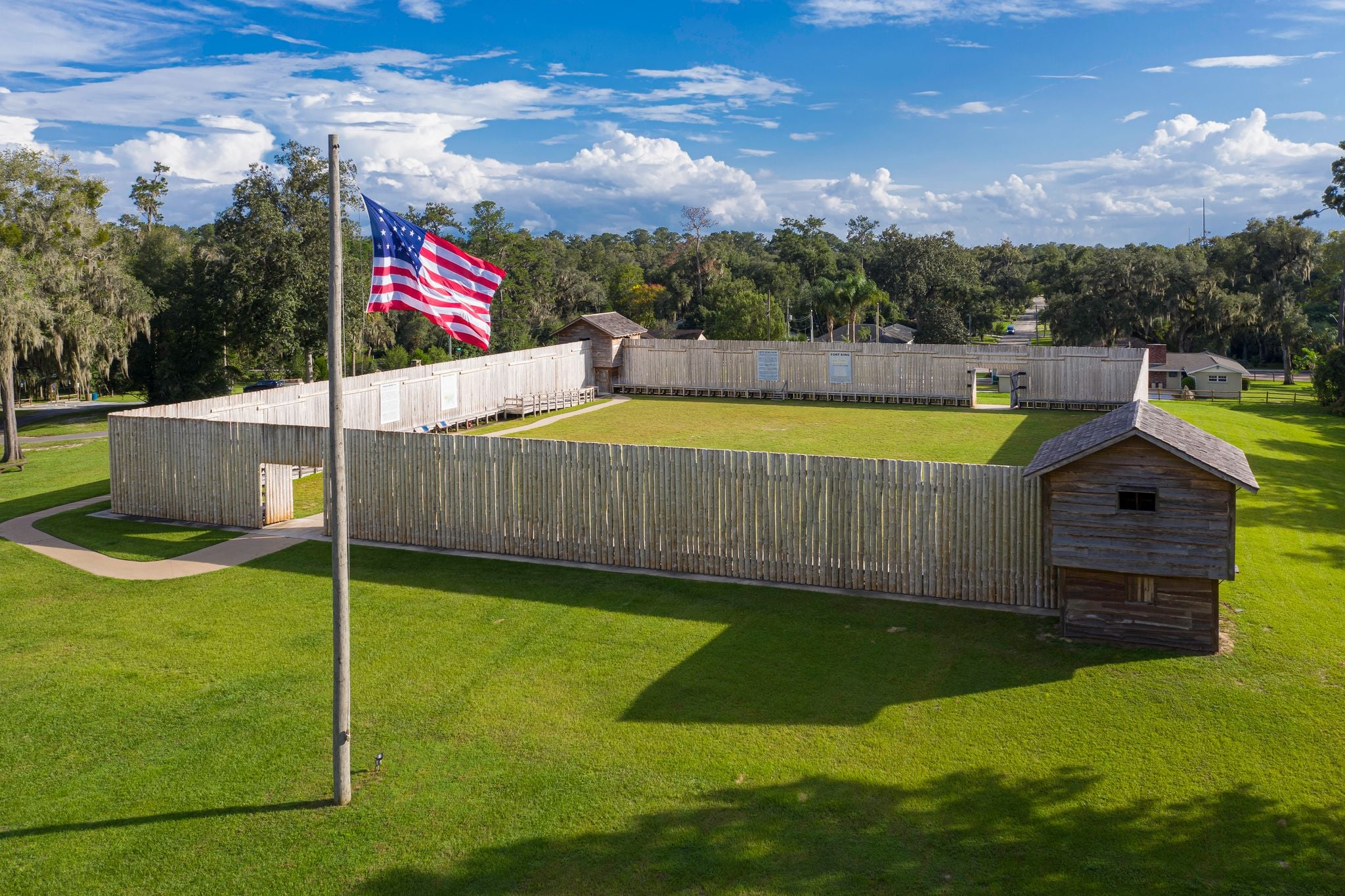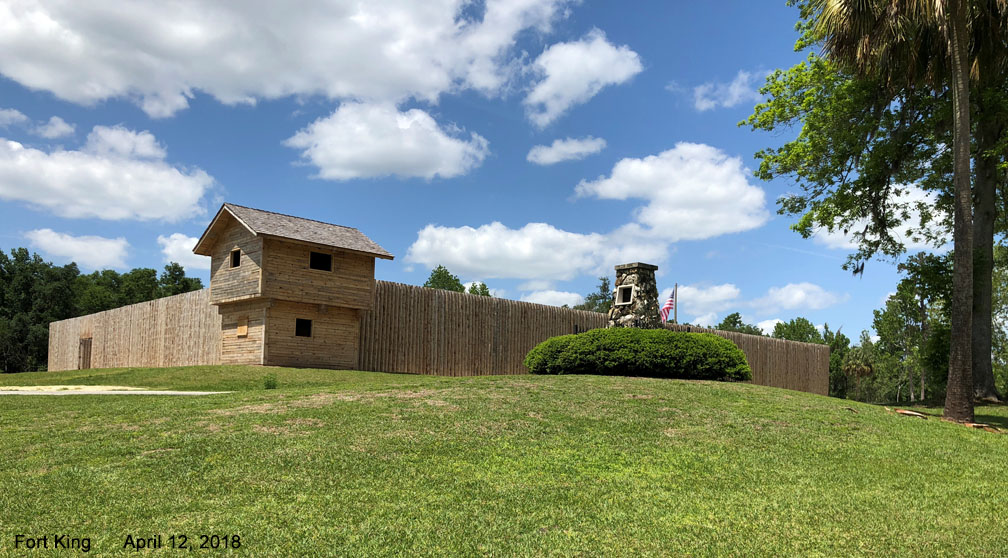
Fort King: Where Florida’s Bloodiest War Ignited
Beneath the placid canopy of live oaks in Ocala, Florida, lies a meticulously reconstructed frontier fort, a silent sentinel to a past both pivotal and profoundly tragic. Fort King, now a national historic landmark and a testament to archaeological perseverance, is far more than just a collection of logs and palisades. It is the crucible where the Second Seminole War, America’s longest and costliest "Indian War," was irrevocably ignited, a flashpoint of cultural collision, land hunger, and the brutal realities of Manifest Destiny.
In the nascent years of Florida’s territorial status, following its acquisition from Spain in 1821, the burgeoning American population cast covetous eyes upon the rich lands occupied by the Seminole people. These were not just indigenous inhabitants; many were descendants of Creeks who had fled south, joined by escaped slaves and other Native American groups, forging a unique and resilient culture in the peninsula’s wild heart. Their very presence was deemed an impediment to American expansion and agricultural ambition, particularly the lucrative cotton trade.
A Frontier Outpost of Control

It was against this backdrop of escalating tension that Fort King was established in 1827. Named after Colonel William King, a commander in the U.S. Army, the fort’s strategic location near the intersection of several crucial Indian trails and the newly surveyed border of the Seminole reservation made it a pivotal outpost. Its primary purpose was twofold: to monitor the Seminoles, ensuring they remained within the confines of their designated lands, and to serve as a base for the U.S. Indian Agency, tasked with facilitating the "removal" of the Seminoles to lands west of the Mississippi River.
The policy of Indian Removal, championed by President Andrew Jackson, was gaining relentless momentum across the southeastern United States. Treaties, often signed under duress or by unrepresentative factions, were the legal instruments of this policy. For the Seminoles, their destiny was seemingly sealed by the Treaty of Payne’s Landing in 1832. This controversial agreement stipulated that the Seminoles would inspect lands in the West and, if found suitable, would agree to relocate. A subsequent, equally contentious treaty, the Treaty of Fort Gibson, purportedly finalized their consent to emigrate.
Yet, a significant portion of the Seminole nation, led by powerful and defiant chiefs like Micanopy, Jumper, and most notably, Osceola, vehemently rejected these agreements. They viewed them as illegitimate, their lands as sacred, and their right to remain as inviolable. "We have no country but this," Osceola famously declared, "and we want no other."
The Clash of Wills: Thompson and Osceola
At the heart of the simmering conflict around Fort King were two men whose wills clashed like flint and steel: Wiley Thompson, the federal Indian Agent stationed at the fort, and Osceola, the charismatic and unyielding Seminole warrior. Thompson, a former U.S. Congressman from Georgia, was a man of his era – firm, resolute, and convinced of the righteousness of the removal policy. He saw the Seminoles’ resistance as stubbornness, a hindrance to progress that needed to be overcome with a firm hand.
Osceola, on the other hand, was a young, rising leader, not a hereditary chief but a man whose eloquence, courage, and fierce dedication to his people earned him immense respect and influence. He had witnessed the broken treaties and forced removals that had befallen other tribes and was determined that the Seminoles would not suffer the same fate.
The relationship between Thompson and Osceola, initially marked by cautious respect, rapidly deteriorated. Thompson, frustrated by the Seminoles’ refusal to cooperate with emigration plans, resorted to increasingly coercive tactics. In one infamous incident, he confiscated Osceola’s rifle and briefly imprisoned him at Fort King for insubordination. Osceola, seething with indignation, was said to have replied to Thompson’s threats of force, "You don’t know me. You don’t know the Seminole."
The tension was palpable, a powder keg waiting for a spark. The Seminoles continued to raid settlements for supplies, while the U.S. Army prepared for a forced removal. The stage was set for an explosion.

The Fatal Spark: December 28, 1835
The fuse, however, was lit years earlier. During the negotiations for the Treaty of Payne’s Landing, Osceola, reportedly infuriated by what he perceived as a fraudulent agreement, plunged his knife into the document, exclaiming, "This is the only treaty I will ever make!" This act of defiance foreshadowed the coming storm.
The storm broke on a fateful day, December 28, 1835. As Wiley Thompson and Lieutenant Constantine Smith dined outside Fort King, a party of Seminole warriors, led by Osceola, emerged from the surrounding hammock. In a swift, brutal ambush, Thompson and Smith, along with three other men, were killed and scalped. It was a direct act of vengeance, a declaration of war against the architect of their removal.
Hours after Thompson’s life was brutally cut short, approximately 100 miles to the south, another horrific event unfolded that would forever be linked with the Fort King killings. Major Francis L. Dade, leading a column of 108 U.S. soldiers from Fort Brooke (modern-day Tampa) to reinforce Fort King, marched into a meticulously planned ambush by Seminole and Black Seminole warriors near what is now Bushnell. The engagement, known as the Dade Massacre, annihilated Dade’s command, with only three soldiers surviving to tell the tale.
These two coordinated attacks, occurring on the same day, were not isolated incidents but a clear, emphatic rejection of American authority and a fierce assertion of Seminole sovereignty. They marked the unambiguous beginning of the Second Seminole War.
Fort King’s Role in the War
Fort King, though never directly attacked in a major engagement, served as a crucial logistical and command center throughout the early years of the conflict. It was from its grounds that generals like Winfield Scott and Thomas Jesup strategized, and troops were dispatched into the treacherous Florida wilderness, chasing an elusive enemy skilled in guerrilla warfare. The fort became a symbol of American presence and determination, a beacon for settlers and a target for Seminole resentment.
However, the war proved far more protracted and difficult than anyone in Washington D.C. had anticipated. The Seminoles, masters of their swampy domain, employed hit-and-run tactics, melting into the dense hammocks and cypress swamps, making conventional warfare largely ineffective. The U.S. Army, unaccustomed to the brutal climate and terrain, suffered from disease, exhaustion, and constant ambushes.
The conflict dragged on for seven years, from 1835 to 1842, costing the United States an estimated $20 to $40 million (an astronomical sum for the era) and the lives of over 1,500 soldiers, many more to disease than to combat. The human cost to the Seminoles, both in lives lost and the trauma of forced removal, is immeasurable. Though Osceola was eventually captured under a flag of truce in 1837 and died in captivity, the Seminole resistance continued, led by other formidable chiefs.
Abandonment, Rediscovery, and Reconstruction
By 1842, with the Seminole resistance largely broken and most of the remaining population forcibly removed to Oklahoma, the need for Fort King diminished. The frontier had moved south, and the fort was eventually abandoned. Over the decades, its wooden structures decayed, its palisades crumbled, and the Florida wilderness slowly reclaimed the site, burying the fort beneath layers of earth and vegetation. Its exact location was lost to memory, becoming little more than a historical footnote.
For over a century, Fort King lay buried, its story muted by time. It wasn’t until the late 20th and early 21st centuries that renewed interest and dedicated archaeological efforts began to unearth its secrets. In 2007, a groundbreaking partnership between the City of Ocala, Marion County, the Fort King Heritage Association, and the University of Florida began systematic archaeological excavations. Using historical maps, ground-penetrating radar, and meticulous digging, archaeologists confirmed the precise location of the original fort. They unearthed thousands of artifacts – musket balls, uniform buttons, pottery shards, and tools – each a tangible link to the lives lived and lost on those grounds.
Today, a magnificent reconstruction of Fort King stands proudly on its original footprint. Completed in 2017, the fort is a remarkable feat of historical accuracy and community dedication. Built using traditional methods and materials, it offers visitors a vivid, immersive experience of frontier life in the 1830s. The palisades, blockhouses, and barracks stand as they once did, inviting contemplation of the complex narrative they represent.
A Legacy of Remembrance and Reflection
Fort King serves as a tangible, poignant reminder of a critical, often uncomfortable, chapter in American history. It is a place where visitors can walk the same ground where Wiley Thompson met his end, where Osceola defied an empire, and where the echoes of a brutal war still resonate.
The site is not merely a celebration of military history; it is an educational resource that grapples with the complexities of the past. It prompts vital questions about land rights, cultural identity, the ethics of expansion, and the enduring legacy of conflict. The Fort King National Historic Landmark strives to present a balanced narrative, acknowledging the perspectives of both the U.S. military and the Seminole people. It is a place for dialogue, for understanding the profound human costs of historical forces, and for ensuring that the lessons of the past are not forgotten.
As visitors walk the grounds today, amidst the quiet beauty of the Florida landscape, they are invited to look beyond the reconstructed walls and consider the courage, the desperation, and the immense sacrifices made by all who were swept up in the vortex of the Second Seminole War. Fort King stands as a solemn monument, not just to a fort, but to the indelible mark left on the land and its people by the war that ignited right here, beneath the Ocala oaks.


